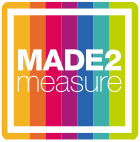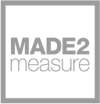How To Install Sandblasted Mirrors
Step 1 - Check and prepare your substrate
Please note:
Your sandblasted pattern is applied to the back of the mirror, which leaves the design detail translucent. When applied to a wall or substrate, the background colour will show through slightly. It is a similar effect to placing an object closely behind a frosted glass window. Please ensure your wall is uniform in colour and such things as holes or fixing plugs do not fall where the sandblasted pattern has been applied, as these will show on the face of the mirror, spoiling the overall effect. Additional important information is found in Steps - 3 and 4.
Ensure your wall is clean and dust free.
If any electrical sockets or switches need to be removed or repositioned, we recommend this is done by a qualified electrician.
If you are installing your mirror with adhesive, you will most likely need to support it in position until the adhesive has fully cured (normally 24 hrs). Most sized mirrors will require some form of support, which can be a temporary horizontal wooden batten fixed to the wall or 'plasterers props'. People have angled 2x2 timber to form props, but there are obvious risks using this method. Whichever method you choose, it will need to be prepared before you begin installation.
Step 2 - What you need
For installation with adhesive
You will require a tape measure, pencil, mastic gun, mirror adhesive, stanley blade, low modulus neutral cure silicone.
MIRROR ADHESIVE
If you do not use our mirror adhesive please ensure it clearly states MIRROR ADHESIVE on the tube and do not listen to anyone else's advice as certain aggressive glues such as no nails will eat into the back of the mirror - only trust the tube! If using our adhesive one tube will hang 22kgs of mirror onto a flat surface. available here
For installation with screws
You will need a pencil or marker pen, spirit level and drill with appropriate bit for wall type.
If using the screws we provide for our 7mm holes you will require a 8mm bit and rawlplug size 8mm.
Step 3 - Installing using adhesive
Check your mirror is NOT safety backed. Safety backing film is either clear or white in colour and applied to the back of your mirror.
You do not need any backing to glue a mirror to a wall safely. You can use glue with foil backing if this was selected. Foil backing is a metallic colour and impossible to confuse with safety backing. However you must not use glue with safety backing as explained earlier. You may consider using foil backing if managing a site with independent contractors and you have concerns they may use the wrong adhesive. If you use the wrong adhesive on a mirror it could eat the paint and silver away.
Place the mirrors in a such way that the back painted side is up and facing you.
Take your mastic gun and apply lines of adhesive evenly sized and spaced about 10 cm apart across the face. IMPORTANT: Ensure the adhesive is not placed on the sandblasted area as this will show through as a shadow on the mirror face. We suggest leaving a minimum distance of 40mm from any pattern.
Once the mirror is covered with an appropriate amount of adhesive, safely lift and position the mirror into the desired location, applying firm even pressure to the mirror surface. The glue does not set immediately so you can maneuver the mirror once it has first been positioned onto the wall itself. However, try not to move it too much as the adhesive could spread and encroach onto the sandblasted area.
Once you are satisfied the mirror is in the correct position and if required is resting on a safe baton, we recommend holding the mirror for three minutes. After three minutes the mirror is safe to let go and will not come off the wall.
It does take 24 hours to dry and therefore do not remove the batons until this time has elapsed. Also ensure the room is at an ambient temperature as this helps the drying process.
Mirrors in wet areas or areas where there is potentially aggressive cleaning products being used need extra protection. Basically kitchen areas and bathrooms are areas where this additional protection is strongly advised. Simply take our neutral cure low modulus silicon and place a thin bead around the mirror creating a protective membrane around the back edge of the product. Our product is clear but other colours are available online if you wanted to make this a feature. To stress the bead need only be a few mm thick but in doing this your mirror will last for years without any chance of water or bleach like cleaning products attacking the edges over time and thus causing potential deterioration.
Step 4 - Installing using screws
Take your mirror and place this into the position that you wish it to hang on the wall. Use the spirit level if required to ensure the mirror is level.
Next place your pencil / marker through the holes in the mirror to mark the drill locations on your wall. You will obviously require two people for this process for larger mirrors.
If building a wall of mirrors we suggest you start one side and add one mirror at a time as this accommodates for our small manufacturing tolerances.
Use your drill to go into the wall approx 60mm to accommodate our 50mm screws. Then insert your rawlplug.
Ensure whoever is holding the mirror is strong enough to do so without letting go during the installation. You may want to consider using sucker cups that are available to purchase in our mirror extras section/mirror-extras/ but in reality most people choose not to do this.
Take each screw and place the rubber gromit onto the screw so that once in position the face of the rubber would be facing the front of the mirror and the tubular section is going into the hole itself. This rubber gromit is there for additional protection in the event of ovetightening a screw which can cause the mirror to crack.
Screw into your wall ensuring you do not overtighten. Then repeat this for all holes. Once completed take the dome screw caps and simply clip these onto the head of the screws.
Dropping the mirror during installation and overtightening are the main issues to consider and ensure you avoid during this process.
Job done! Repeat if necessary for additional mirrors.





